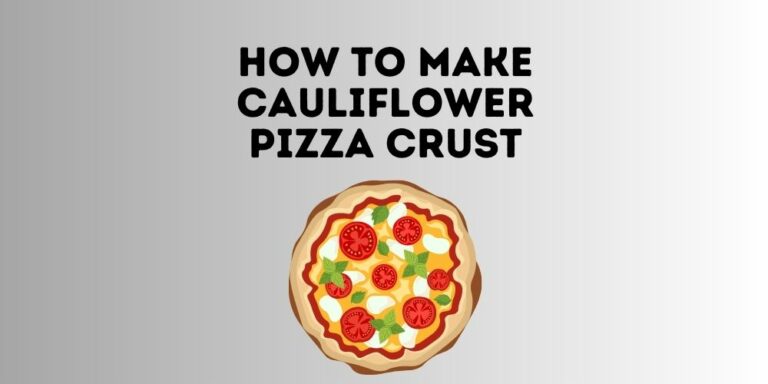
Pizza Dough To Make Perogies
Perogies, also known as pierogi, are a beloved dish in many Eastern European countries, including Poland, Ukraine, and Russia. These small dumplings are typically filled with a mixture of mashed potatoes, cheese, sauerkraut, or meat and then boiled or fried. They are often served as a portion of comfort food during holidays, family gatherings, or everyday meals.
While traditional perogies dough is made from flour, water, and eggs, some people may wonder if they can use other types of dough to make this dish. One such alternative is pizza dough, which is a versatile dough made from flour, yeast, water, salt, and sometimes sugar and oil. In this blog post, we’ll explore whether pizza dough can be used to make perogies and how to do it. So, whether you’re a fan of perogies or just looking to experiment with different dough types, read on to learn more!
Pizza Dough Perogies: A New Twist on a Traditional Dish

Pizza dough is a type of dough used to make pizzas. It is typically made from a combination of flour, yeast, water, salt, and sometimes sugar and oil. The dough is kneaded until it becomes elastic and smooth, and then left to rise for several hours before being rolled out and baked. Pizza dough can be made by hand or using a stand mixer with a dough hook attachment.
The ingredients in pizza dough are relatively simple, but the ratio of ingredients and the way they are combined can make a big difference in the final texture and flavor of the dough. Flour provides the structure for the dough, while yeast helps the dough rise and gives it a slightly tangy flavor. Salt enhances the flavor and helps the dough to develop its texture, and water hydrates the dough and helps to activate the yeast.
The texture and consistency of pizza dough can vary depending on the recipe and the way it is prepared. Good pizza dough should be slightly sticky, but not too wet or dry. It should be elastic and easy to work with and should stretch out easily when rolled or stretched. When baked, it should be crispy on the outside and soft and chewy on the inside.
What Are Perogies?
Perogies, also known as pierogi, are a type of dumpling that originated in Eastern Europe. They are typically made from a dough made from flour, water, and eggs, which is rolled out and cut into circles. The circles are then filled with a mixture of mashed potatoes, cheese, sauerkraut, or meat, and then sealed and boiled or fried.
Perogies have a long history and are considered a staple dish in many Eastern European countries (as per Allrecipes). They are often served during holidays or special occasions but are also popular as a portion of comfort food for everyday meals.
The texture of perogies dough is slightly different from pizza dough, as it is typically softer and more pliable. This makes it easier to fold and shape into the traditional half-moon shape that is common for perogies. The filling is also an important part of the texture, as it should be creamy and flavorful, without being too heavy or greasy.
Can Pizza Dough Be Used to Make Perogies?
Yes, pizza dough can be used as a substitute for perogies dough to make perogies. While the texture and flavor of the perogies will be different from the traditional ones, using pizza dough can be a fun and tasty twist on the classic dish.
Using pizza dough to make perogies can be especially convenient if you already have pizza dough on hand, or if you prefer the taste and texture of pizza dough over traditional perogies dough. Pizza dough is also more forgiving than perogies dough, which can be difficult to work with if you are not experienced in making dumplings.
The main difference between pizza dough and perogies dough is the texture. Pizza dough is typically denser and chewier than perogies dough, which is softer and more delicate. Perogie dough also tends to be slightly sweeter than pizza dough, which is typically more savory.
To make perogies with pizza dough, simply roll out the dough and cut it into circles using a cookie cutter or a glass. Then, fill the circles with your desired filling, such as mashed potatoes or cheese, and fold the dough over to seal. Boil the perogies until they float to the surface, and then serve with your favorite toppings or sauces.
While pizza dough perogies may not be traditional, they can be a fun and delicious twist on a classic dish. So, don’t be afraid to experiment with different dough types and fillings to create your own unique perogies creations.
How to Make Perogies with Pizza Dough
Now that we’ve established that pizza dough can be used to make perogies, let’s dive into how to do it. Follow these step-by-step instructions for making delicious perogies with pizza dough.
Ingredients
- 1 batch of pizza dough
- 1 cup mashed potatoes
- 1/2 cup shredded cheese
- 1/4 cup finely chopped onion
- Salt and pepper to taste
- Water for boiling
- Toppings and sauces of your choice (optional)
Instructions
- Preheat your oven to 400°F (200°C) and line a baking sheet with parchment paper.
- In a bowl, mix together the mashed potatoes, cheese, onion, salt, and pepper until well combined.
- Roll out the pizza dough on a floured surface until it’s about 1/8 inch thick.
- Use a cookie cutter or a glass to cut out circles of dough. The size will depend on how big you want your perogies to be.
- Spoon a small amount of the potato mixture onto each dough circle.
- Fold the dough over the filling and press the edges together to seal. Use a fork to crimp the edges and ensure they are tightly sealed.
- Bring a large pot of salted water to a boil.
- Add the perogies to the boiling water, making sure not to overcrowd the pot. Cook for 3-5 minutes or until the perogies float to the surface.
- Remove the perogies from the water with a slotted spoon and transfer them to the prepared baking sheet.
- Bake the perogies in the preheated oven for 10-15 minutes or until golden brown.
- Serve hot with your choice of toppings and sauces.
Tips and Tricks
- Be sure to seal the perogies tightly so that the filling doesn’t leak out during cooking.
- To save time, you can use store-bought mashed potatoes instead of making them from scratch.
- Experiment with different fillings, such as sauerkraut or ground meat, to find your favorite combination.
Serving Suggestions
Pizza dough perogies can be served in a variety of ways. Here are some ideas to get you started:
- Top with sour cream, bacon bits, and chives for a classic perogies topping.
- Serve with a side of sautéed onions and mushrooms.
- Drizzle with garlic butter or olive oil and sprinkle with Parmesan cheese.
- Serve with a dollop of marinara sauce and a sprinkle of mozzarella cheese for a pizza-inspired twist.
However, using pizza dough to make perogies is a fun and tasty way to switch up this traditional dish. With a little bit of experimentation, you can create your own unique perogies recipe that’s sure to be a hit with friends and family.
FAQs on Pizza Dough Perogies
What is pierogi dough made of?
Pierogi dough is made from a simple combination of flour, eggs, water, and salt. The dough should not be too dry or too wet, so you might need to adjust the amount of water or flour based on the humidity and weight of the flour.
Why is my pierogi dough falling apart?
If your pierogi dough is falling apart, it could be due to the filling being too creamy or soft. Avoid using instant or flaked potatoes and make sure to mash the potatoes with cream cheese and mozzarella for a firmer texture.
Is pierogi and ravioli dough the same?
While pierogies and ravioli are both doughy pillows stuffed with soft fillings, the fillings are where these cousins diverge. Pierogies are commonly filled with mashed potatoes or fruit, while ravioli is often filled with cheese or meat.
Do you have to boil pierogies before frying them?
While it’s not required, boiling pierogies before frying them is a traditional method. Boil the pierogies in salted water until they float, then transfer them to a pan with butter or oil to fry until crispy. You can also skip the boiling step and fry the pierogies directly from the freezer.
Final Thoughts on Pizza Dough To Make Perogies
Using pizza dough as a substitute for traditional perogies dough can have both advantages and disadvantages. One advantage is that pizza dough is readily available and easy to work with, while a disadvantage is that it can affect the texture and flavor of the perogies. However, with a few tips and tricks, you can still achieve delicious results when using pizza dough.
We encourage readers to experiment with different types of dough and fillings to find their perfect perogies recipe. Whether you prefer a classic potato and cheese filling or something more adventurous like sauerkraut or fruit, there are endless possibilities for creating a delicious perogies dish.

Handsomepizza.com is the brainchild of two pizza-obsessed friends who wanted to share their love of pizza. We are dedicated to bringing you the latest news, reviews, and insights on pizza.






